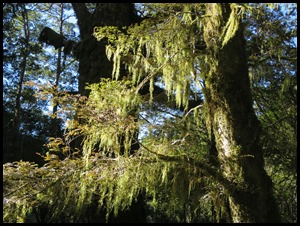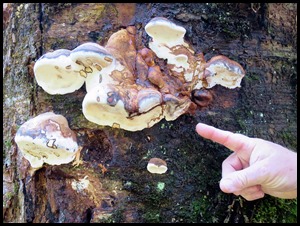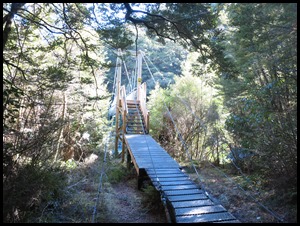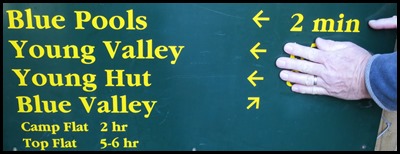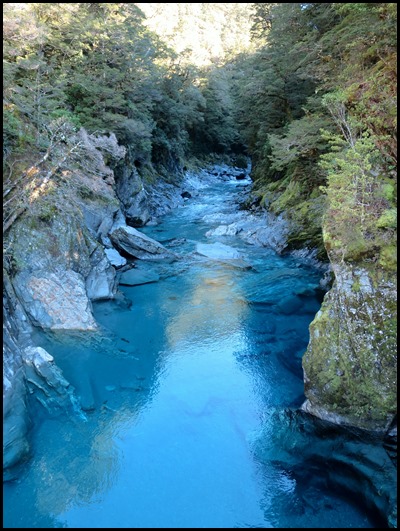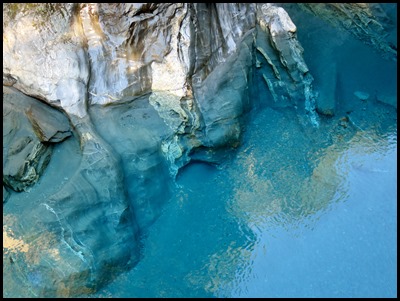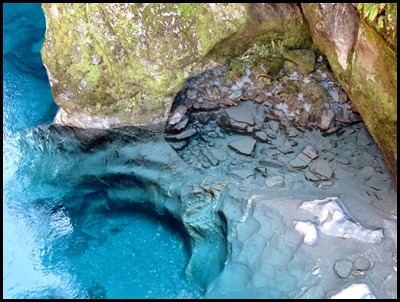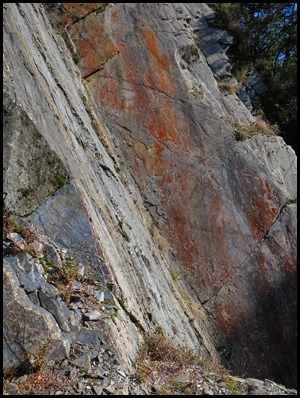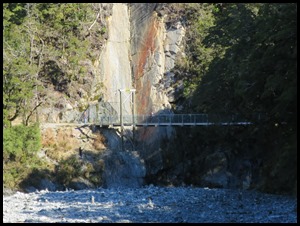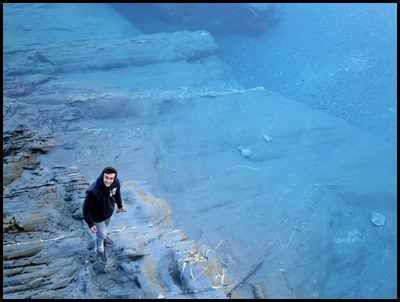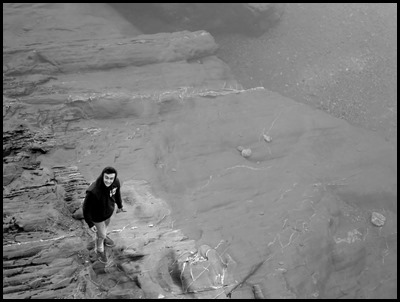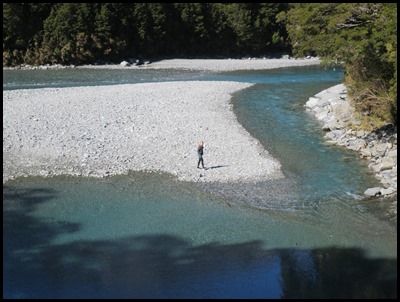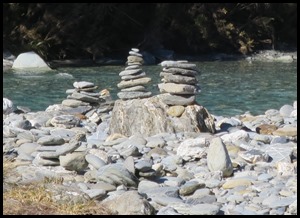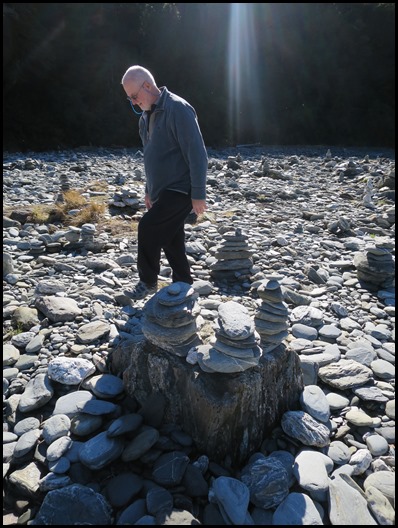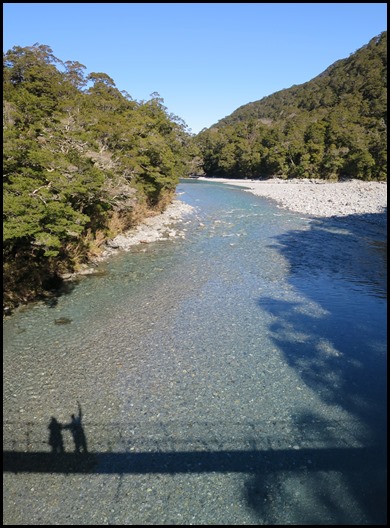Blue Pools

|
Blue Pools 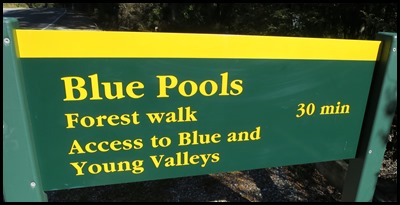 En route to
Haast we stopped at a roadside sign that said Blue
Pools. Thirty minutes in one hit is our preferred tramping time, I say
tramping as it is to be undertaken at a faster pace than a bimble. Yes dear.
 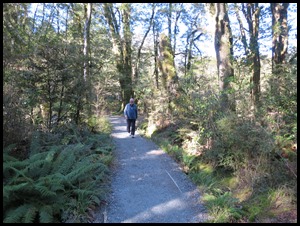 Off we went, passing an information board,
we’ll read that on the way back. No one else here so we’ll tramp alone,
following yet another well maintained track, the
Department of Conservation do a brilliant job here in New Zealand.
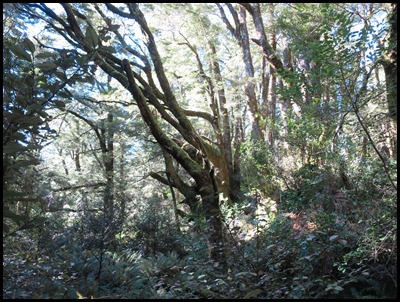 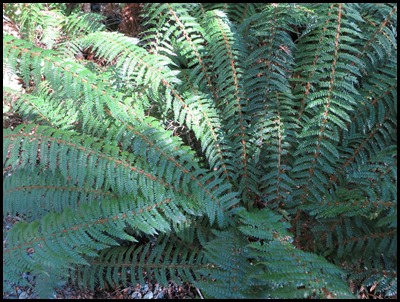
Dense forest left and right of the track with so many different ferns. "The whole scene, in spite of its green colour, had a rather desolate aspect. The sight of so much fern impresses the mind with an idea of sterility ..." A bit harsh of Charles Darwin methinks.
Wonderful moss and fungus in the deep shade of the trees. Bet the mossies are killers here in the summer. Mmmm.
The track came to an impressive Makarora Bridge over the river of the same name. Looking upriver we could see the mountains.
Looking downriver we could almost see glacial blue in the shallow water, another bridge in the distance.
At the end of this very smart track there was a choice..........
Righteeeooo then. Point taken.
Half way across the next bridge and OH THAT IS BLUE.
It was so blue it looked false, so I walked to the very end of the bridge and took the same area at a different angle. This was what we saw.
Looking over the right side of the bridge, left and right was quite weird. The water was so clear that we could see down into the deepest water – about twelve feet.
The rocks on the walls of the valley are massive, as seen by Bear standing below the bridge.
The sign said – no arguments from us then...... These pools derive their name from the distinctive blue of the water. The blue colour is a result of light reflection on the clear, snow-fed, icy cold water. When the Blue River is in flood, large quantities of gravel are brought downstream from a number of slips in the headwaters. If the Makarora River is also in flood it will sometimes prevent the gravel escaping out of this gorge. The gravel is then deposited in the pools causing the pools to look a muddy brown colour. It takes another flood of the Blue River to wash the gravel downstream and return the pools to their normal depth and colour. Large rainbow and brown trout can normally be seen swimming in the pools, especially during the autumn and winter months when they migrate up the Makarora River from Lake Wanaka to spawn.
We threw a pebble for the health, happiness and good joss of the children and grandbabies and another for our friends. I was pleased when a young tourist came by so we could prove that no camera settings had been ‘fiddled with’.
Even weirder was to see the same picture in black and white, the deep to shallow water so clear. Our young friends lady was off exploring the river bed.
Next, we bimbled down onto the ‘beach’ to build our all important and oh so special Inuksuk. A carefully placed pile of stones for the children, a pile of six for the other halves – an offset balance stone for yours Al, when you get there, no pressure but ‘urry up and the special ten, for our much adored grandbabies. We did have to get a move on when the gangs of sandflies knew where we were. The word inuksuk means "something which acts for or performs the function of a person". The word comes from the morphemes inuk ("person") and -suk ("ersatz" or "substitute").
No Bear has not turned Inuit, Inupiat, Kalaallit, or Yupik, but it does rather look like a dance, what with the light catching..........actually he was dissuading the sandflies who have really turned their full little Dracula ways on his feet. On our way back we made our shadows in the river, at the end of the track we stopped to read the Information Board.
 The sign said “If you’ve been bitten by
tiny black fly you’ve had a visit from the Dracula of our West Coast rain
forest, blackfly A. ungulatum, commonly known as the sandfly namu. Some people attract
sandflies more than others, possibly due to chemicals produced by their skin or
the colour of their clothing. Black, red and blue seem to attract the most
attention, while white, yellow and green don’t. Male sandflies/namu are content
to live off the sap of plants. Its the females who annoy –
but of course – steady,,,,,,,
especially at dawn and dusk, looking for a blood protein to help produce their
eggs. Sandfly/namu saliva contains anti-coagulants that help keep the blood
flowing, after two minutes, appetite satisfied, it departs, leaving a wound and
a lasting itch”. Well we agree with most of this certainly Bear in his black
jacket attracted hundreds, but they start at feet level and in this at least we
are even. The other colours mentioned, if there is no black they seem to go for
anything they can zone in on........... Mosquitos tend to leave Bear alone in
preference of me but with these little enemies - its an even meal deal. We
accidentally had an experiment today, Bear had no socks on I did. Don’t think that will be repeated....... The
Information Board went on:-
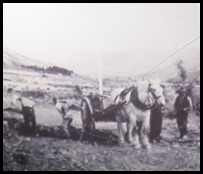 Early Encounters with Sandflies: James
Cook wrote the first European record of a sandfly attack in 1774, in Dusky
Sound. “The most mischievous animal here is the small
black sandfly, which are exceedingly numerous, wherever they light they cause a
swelling and such intolerable itching that it is not possible to refrain from
scratching and at last ends in ulcers like the small
pox”.
Westland surveyor
Charlie – Mr. Explorer, Douglas’ diary of the 1890’s muses “....very early on
there were labourers here and no work was getting done so the person involved
invented sandflies, so they had to keep moving during the day..... They were,
however, loafing off at night, so then the boss invented mosquitoes!” Sounds to
us very close to the early Maori legend that says the god
Tu-te-raki-whanoa had just finished creating the landscape of Fiordland, but the
landscape was so stunning in beauty that it stopped people from working and they
stood around staring in awe. The goddess Hinenuitepo became so angry at these
unproductive people that she created the sandfly to bite them and get them
moving again.
 Road builders on the
Haast Pass in the 1930’s found a novel way to pass the time, one recorded,
“........we used to compete with each other by baring our forearm to the
sandflies, then when the first one made its presence felt, we would start
killing them off one by one. I think the record was sixty four before wiping the
stinging mass clear.”
We had been warned, we were now in one of the
world’s capitals for these ......... creatures, due diligence from here until
Greymouth. Got to love some of the names here........
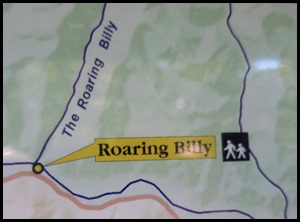 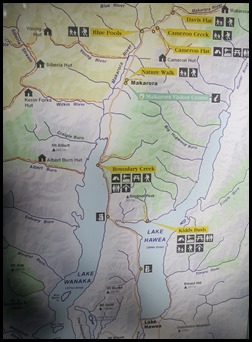  ALL IN ALL SO VERY
BLUE
SHAME ABOUT THE
BITIES |
